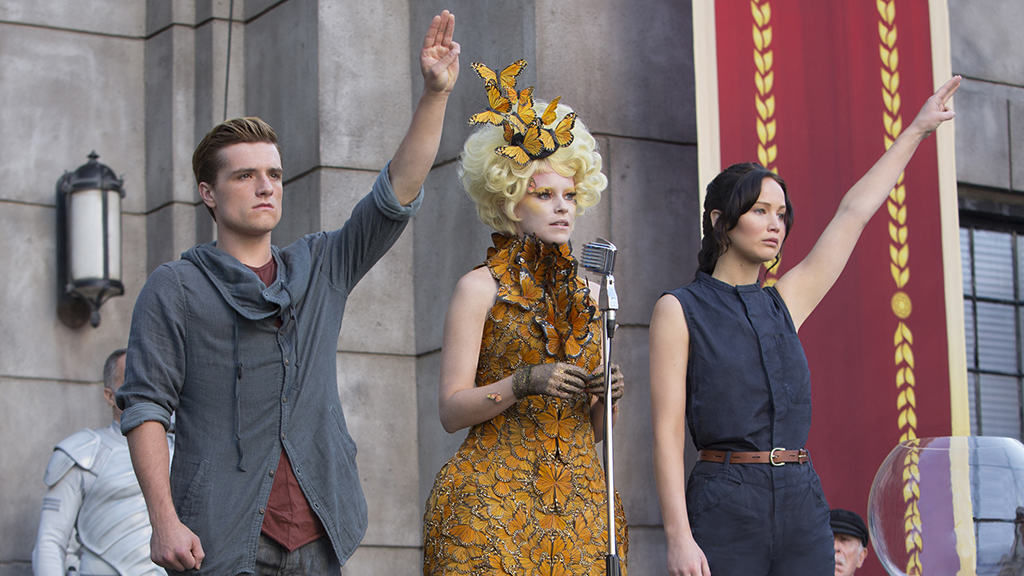Featured Image from geekadelphia.com
Noah Foster-Koth
Catching Fire is the first sequel to 2012’s smash hit, The Hunger Games, a science-fiction film based on the book of the same name by Susan Collins. The previous installment in the series chronicled the struggles of a young woman named Katniss Everdeen (played in both films by Jennifer Lawrence), who is forced to fight 23 other adolescents to the death in a gladiatorial blood sport in the postapocalyptic world of Panem. This sequel finds Katniss, her love interest Peeta (Josh Hutcherson) and the other survivors of the previous games, called back into the arena to fight another battle for the enjoyment of a villainous upper class known as The Capitol. Both films also star Woody Harrelson as Katniss’ mentor Haymitch and Liam Hemsworth as her other love interest, Gale.
I read the book when I was in middle school, but I had forgotten much of Catching Fire’s plot by the time I walked into the theater nearly five years later. I expected the new film to be very similar to the movie that came before it. Fortunately, Catching Fire’s story goes in a somewhat different direction than The Hunger Games. The themes of class warfare, totalitarianism and media phoniness were all touched upon in the first movie, but the latest installment offers a more nuanced look at them. The way the movie explores these ideas is thought provoking, but none of them are thrust at the audience often enough to make the film seem preachy.
If Catching Fire is deeper than most popular teen movies, it’s a lot darker as well. While there are a host of new Michael Crichton-ish threats pursuing Katniss and her friends through the arena, the effect they have on the characters is more excruciating than entertaining. In the previous film the audience rejoiced when Katniss’ competitors were killed; now that a few of them are her allies, their deaths pack a strong emotional punch. The gonzo world of The Capitol offers some comic relief, with its airhead bureaucrats and candy-colored wigs, but it also serves as a stark reminder of how class divisions have ravaged Katniss’ world. The tone of the movie is bleak when it isn’t savagely violent.
Part of the reason the consequences feel so dire is that the characters of Catching Fire are remarkably well-realized by the actors portraying them. Indie favorite Phillip Seymour Hoffman gets a juicy new role as the sleazy architect of the Games, and newcomer Jena Malone takes her potentially tiresome role as a lascivious lunatic and builds it into a force to be reckoned with . But the one part that stands out to me is an unknown but talented actress named Lynn Cohen who scores a small, heartbreaking part as a mute old woman thrown back into the conflicts she survived as a youth.
None of the supporting actors would be able to make up for it if Jennifer Lawrence wasn’t a compelling lead. No worries there: Lawrence is phenomenal as Katniss. From her cries of anguish to her smallest expressions, the actress perfectly embodies the complexities of a woman forced to grow up too fast. Katniss is a clever and capable heroine, but the subtleties of Lawrence’s performance convey the inner turmoil raging inside her. It’s a refreshing change that Katniss is a female protagonist less concerned with the boys around her and more concerned with saving her family and keeping herself alive. She’s one of the most admirable cinematic depictions of a teen girl I’ve seen in a long time.
Catching Fire isn’t perfect – I’m still unsatisfied with its abrupt cliffhanger ending. However, it is a rare page-to-screen adaption that is as good, if not better, than the book it was born from. This is what science fiction movies should be.
Grade: B+

